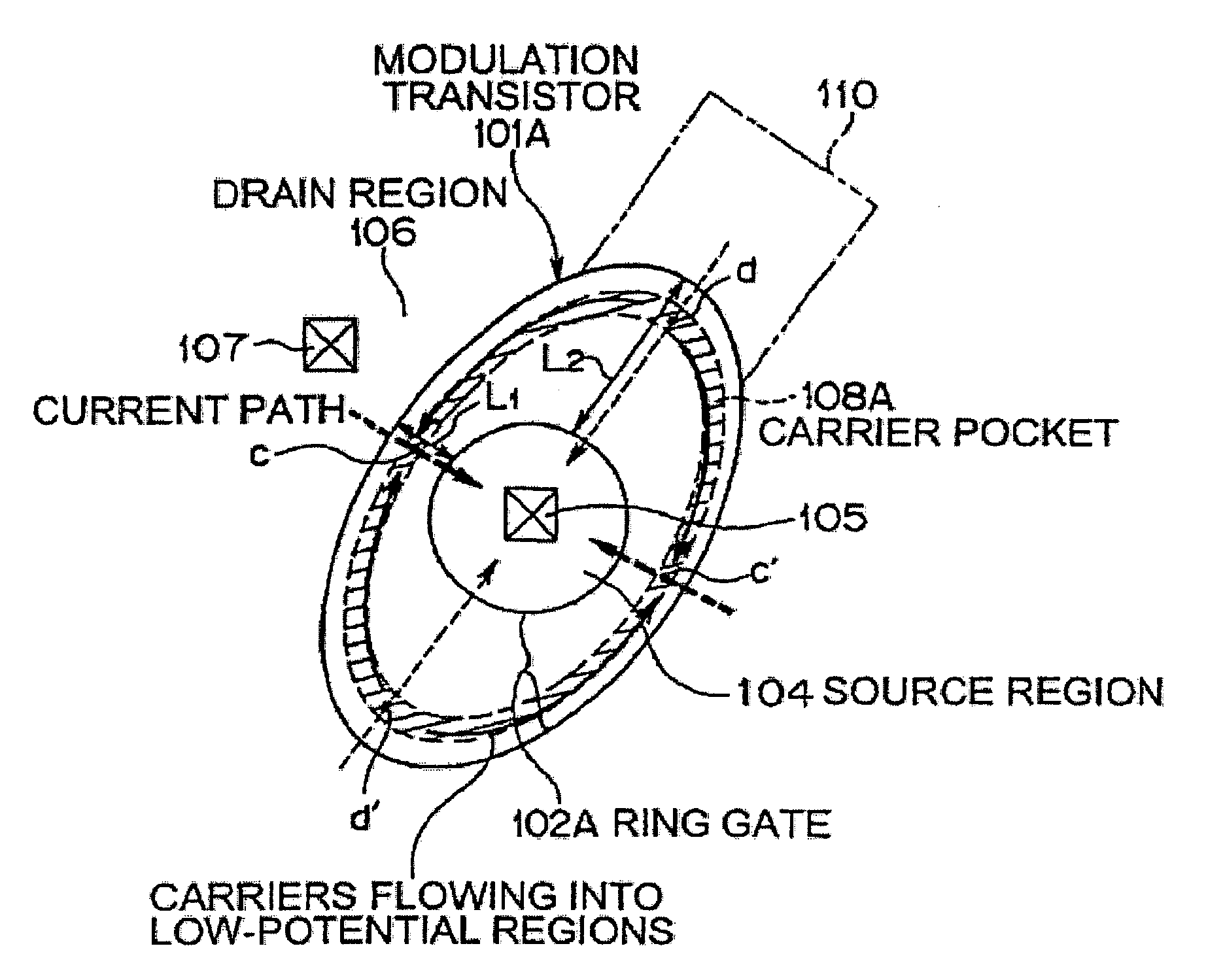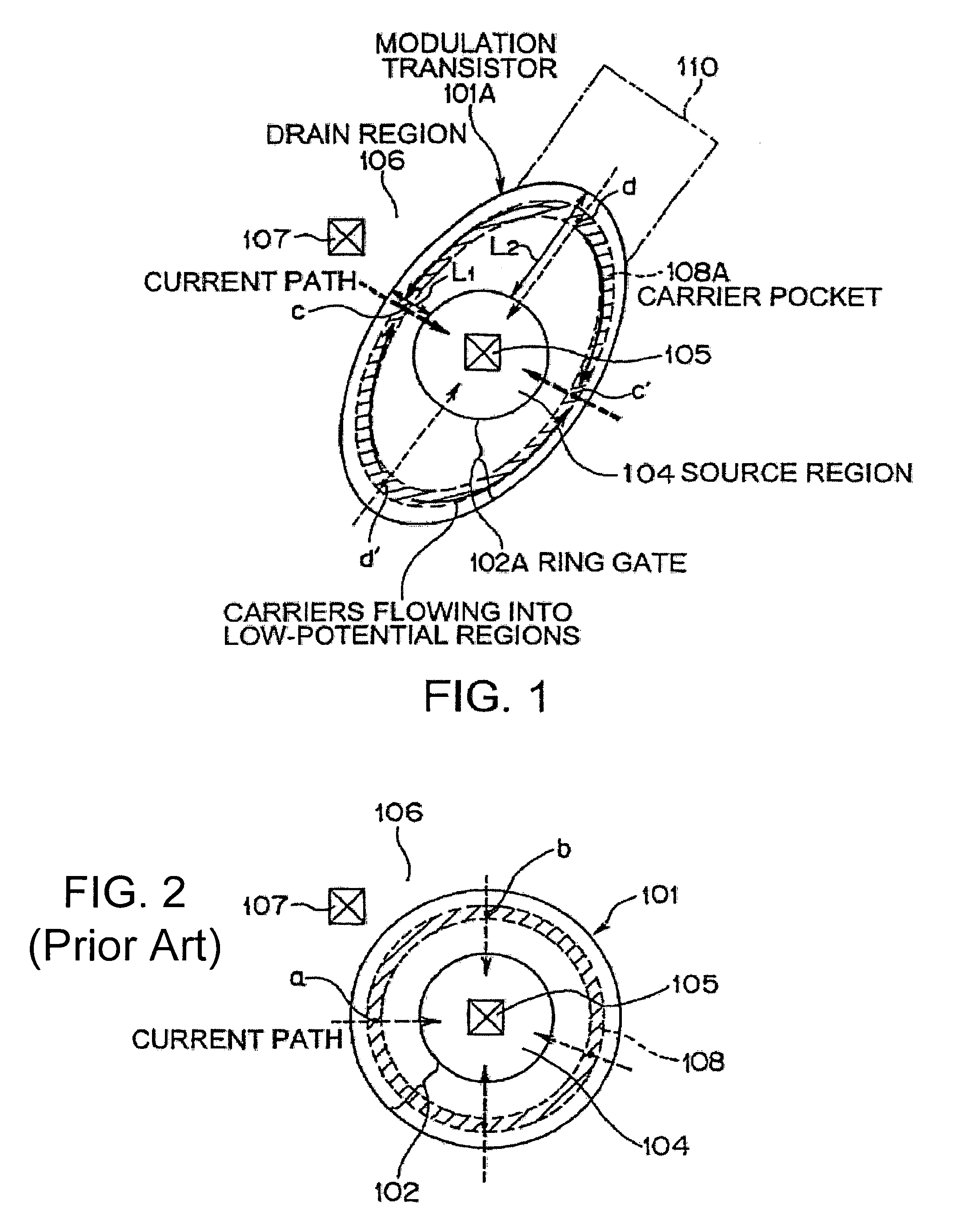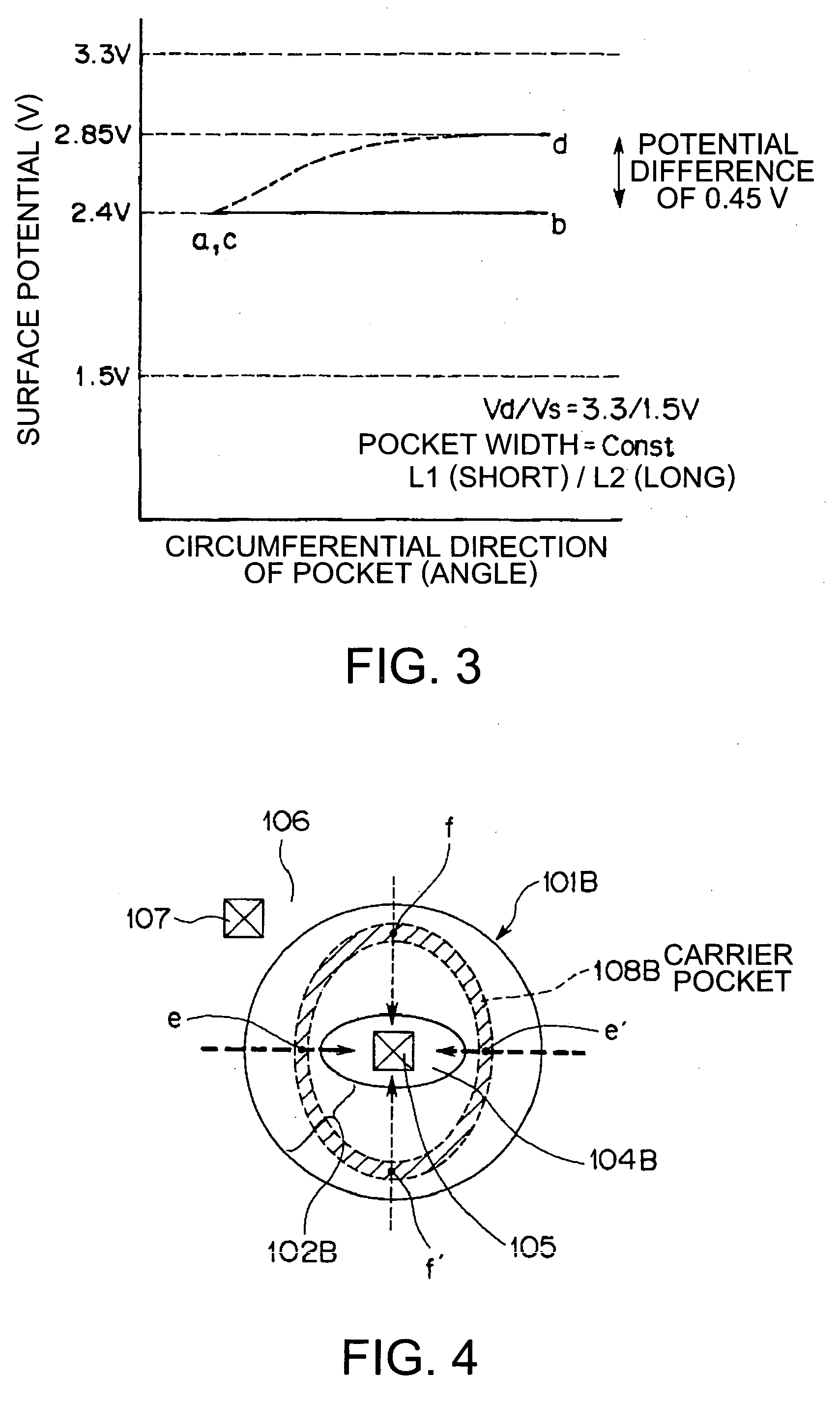Solid-state imaging device
a solid-state imaging and imaging device technology, applied in the direction of color television, television system, radio control device, etc., can solve the problems of slow signal output rise, dark defects, linearity worsening,
- Summary
- Abstract
- Description
- Claims
- Application Information
AI Technical Summary
Benefits of technology
Problems solved by technology
Method used
Image
Examples
first embodiment
[0034
[0035]FIG. 1 is a schematic top-view drawing of a modulation transistor in a solid-state imaging device of a first embodiment of the present invention. FIG. 2 is a schematic view of a conventional modulation transistor (along line A–A′ shown in FIG. 6, the photodiode is not illustrated). FIG. 3 is a graph for comparing surface potential between the modulation transistor according to the present invention and the conventional modulation transistor. For parts that are the same as those shown in FIG. 5, the same numbers are assigned for explanation. In FIG. 1, a modulation transistor 101A according to the first embodiment of the present invention configures a sensor cell together with a photodiode (shown by a two-dot chain line 110) which receives incident light. A ring gate 102A has an oval contour (perimeter shape). The source region 104 is formed in a round shape at the center of the ring gate 102A. A carrier pocket 108A is formed in a ring-shaped narrow band with a roughly con...
second embodiment
[0045
[0046]FIG. 4 is a schematic top-view drawing of a modulation transistor in a solid-state imaging device of a second embodiment of the present invention. In the actual configuration of the sensor cells, there is a photodiode adjacent to the modulation transistor, which is omitted here.
[0047]In FIG. 4, a modulation transistor 101B according to the second embodiment of the present invention configures a sensor cell together with a photodiode (not illustrated) which receives incident light. A ring gate 102B has a round contour (perimeter shape). A source region 104B is formed in an oval shape at the center of the ring gate 102B. A carrier pocket 108B is provided in an approximate oval shape with a roughly constant width under the ring gate 102B and near the circumference in the major-axis direction of the oval source region 104B and, further, near the circumference of the ring gate 102B in the minor-axis direction of the oval source region 104B. The source contact 105 is located at...
PUM
 Login to View More
Login to View More Abstract
Description
Claims
Application Information
 Login to View More
Login to View More - R&D
- Intellectual Property
- Life Sciences
- Materials
- Tech Scout
- Unparalleled Data Quality
- Higher Quality Content
- 60% Fewer Hallucinations
Browse by: Latest US Patents, China's latest patents, Technical Efficacy Thesaurus, Application Domain, Technology Topic, Popular Technical Reports.
© 2025 PatSnap. All rights reserved.Legal|Privacy policy|Modern Slavery Act Transparency Statement|Sitemap|About US| Contact US: help@patsnap.com



